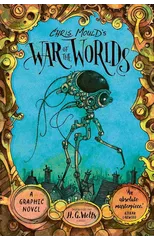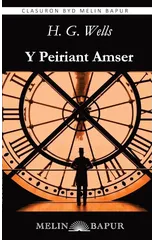This story by the renowned author and one of the fathers of Science Fiction, H.G. Wells, is one of his less well-known scientific romances. Even though it was published in 1904, it deals with issues that are just as relevant, if not more so, today: first and foremost it deals with what is possible scientifically and what can happen when no thought is given to the consequences of putting these possibilities into practice. This edition contains some line drawings at the beginning of the book.
H.G. Wells
H.G. Wells was a prolific English writer best known for his science fiction novels. His most notable works include "The War of the Worlds," "The Time Machine," and "The Invisible Man." Wells' writing style was characterized by his imaginative storytelling, social commentary, and exploration of scientific concepts. He is often credited with popularizing the science fiction genre and influencing future writers in the field. "The War of the Worlds" remains his most famous work, depicting a Martian invasion of Earth and exploring themes of imperialism and the resilience of humanity. Wells' contributions to literature have had a lasting impact on the genre of science fiction and continue to be celebrated to this day.





